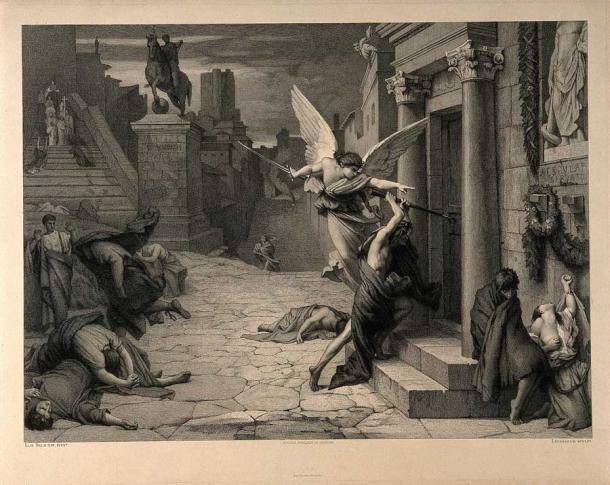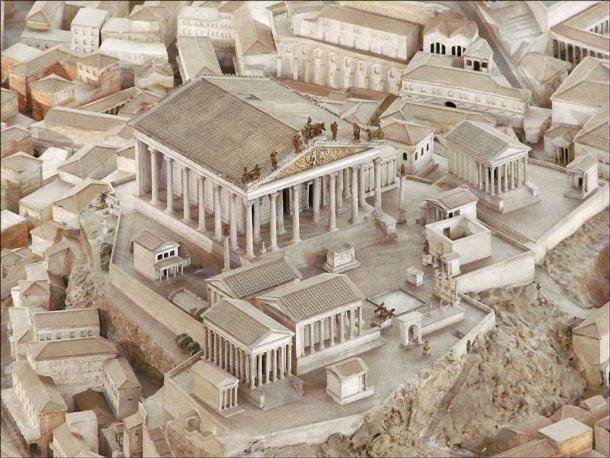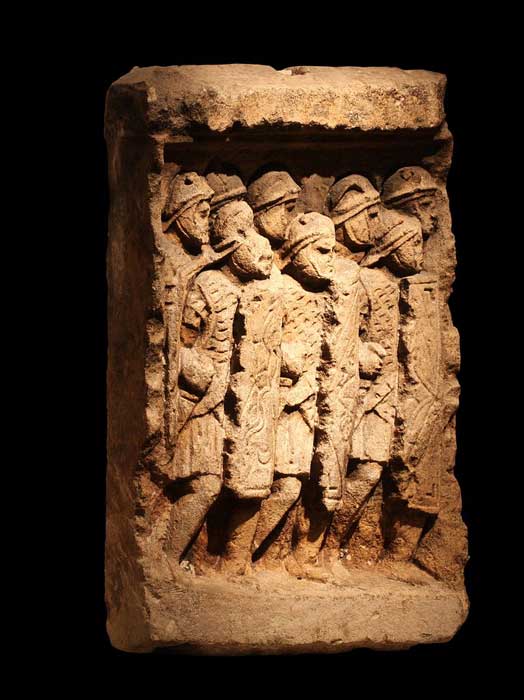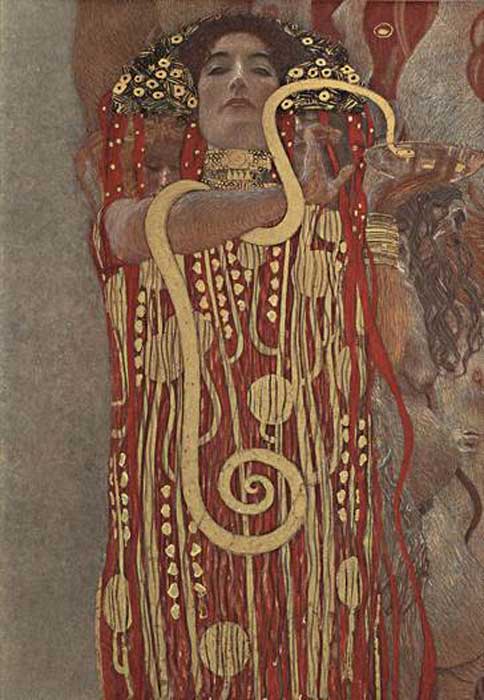The Antonine Plague and the Downfall of the Roman Empire
The Antonine plague, which happened between 165 and 180 AD, was a disastrous pandemic deemed so catastrophic that many historians have argued that it was the first major event to usher in the decline of the Roman Empire. This cataclysmic Antonine plague was even recorded in the historical annals of ancient China, which reported 7 out of 11 pandemics during the 2nd century occurring between the years of 160 to 190. The disease likely spread through the interconnected pathways of the Silk Road trade route, whose tendrils covered vast swathes of Europe and Asia, making the pandemic one of the first truly ‘international’ disasters.
Certainly, the social, economic, and military impact of the Antonine plague weakened Rome’s power significantly, making the once great empire a shadow of its former self and increasingly unable to defend itself from hostile forces.
The Antonine Plague: Origins and Symptoms
In 165 AD under the command of ambitious general Lucius Verus, the Roman legionaries laid siege to Seleucia, an important Parthian stronghold, as part of a wider effort to finally subdue the East under Emperor Marcus Aurelius. The discipline and training of Rome’s great armies proved too much for the Parthian foe, who capitulated as their city was burnt to the ground by Roman leaders and their battle-hardened men.
Victory, however, was short-lived. It was after the sacking and looting of the city that Roman soldiers started to notice strange black bumps appearing on their skin as a foul pestilence started to ravish the ranks. As the victorious soldiers returned home, perhaps back to Rome or to be stationed on the Romano-Germanic border to guard against the opportunistic tribes of the hinterlands beyond, the disease started to rapidly spread among the populace.
- Culling the World: The Catastrophic Conquests of the Black Death
- What Can the Plague of Athens Teach Us About Today’s Coronavirus?
One of the first indications of the new malady, which could last for up to two weeks, was a fever, which was neither warm nor burning. Diarrhea was another major symptom, with the blackness of the stools often determining survival chances, as those with the darkest color most commonly died. The sickness also caused inflammation and internal ulcerations, the sufferer often coughing up the internal scabs caused by the latter. In addition, the voice was made gravelly and weak by larynx infection, the breath became fetid and rotten, and constant mucus build up in the throat only heightened the severity of the cough.
The principal symptom was a large dark skin rash, called an exanthem, which would peel off like a scale if the patient survived. It’s also the main reason scholars have identified the disease as being smallpox, which shares the same characteristic mark.

The angel of death striking a door during the Antonine plague of Rome. Engraving by Levasseur after J. Delaunay. (Wellcome Images / CC BY 4.0)
The Social Impact of Rome’s Antonine Plague
The Antonine plague became one of the biggest health catastrophes in Rome’s illustrious history, with up to a third of the empire’s population perishing. Dio Cassius, the Roman commentator, claimed that deaths reached 2000 a day at its peak.
Many saw the plague as a divine punishment against the Romans and a sign from the gods that they had gone too far during their conquest of the East. Some attributed the plague to Lucius Verus, who allegedly opened a closed tomb in Seleucia, releasing the contagion into the ancient world. Others suspected that the blame could be put on a Roman soldier who opened a golden casket in the Temple of Apollo, supposedly setting the illness free.
Orosius, A Roman historian, reported on the severity of the new plague on the populace of the Roman Empire:
“There followed an epidemic which spread through many provinces and the plague which ravaged Italy was so great that everywhere, farms, fields, and cities, without cultivators and abandoned by their inhabitants, gave place to ruin and woodlands”.
The account of Aelius Aristides illustrated how rapid the infection spread and how it didn’t distinguish between old, young, or even species:
“I happened to be in the suburbs at the height of summer, The plague infected nearly all my neighbors. First two or three of my servants grew sick, then one after another. Then all were in bed, both the younger and the older. I was last to be attacked… the livestock too became sick, and if anyone tried to move, he immediately lay dead before the front door… Everything was filled with despair and wailing and groans, every kind of difficulty”.
An anonymous Roman author outlined the desperate attempts of the Roman consuls to allow people of all classes to grieve for the dead:
“Thousands were carried off by the pestilence, including many nobles, for the most prominent of whom Antonius erected statues. Such too was the kindliness of his heart that he had funeral ceremonies performed for the lower classes even at the public expense”.
Indeed, with the deaths of so many of the upper caste of society, Marcus Aurelius was forced to take extreme measures in Athens, where a shortage of political office-holders plunged the Roman outpost into administrative crisis.
Traditionally Romans could only apply for political office if they had three generations of Roman citizenship. The rules were drastically changed in Athens in 174 and 175 with a letter sent to emissaries by the Roman emperor Marcus Aurelius. Lamenting the “disasters which have befallen”, Aurelius declared:
“I compromise and grant to the Athenians, that in respect to the (family’s) past they consider only this, whether a man has a father of good birth, and if anyone appears to have been expelled by the Areopagus on account of the rule concerning three generations, he shall recover his rank; after this it will suffice for both parents of a man to have been born free”.
Even at the top echelon of society, the disease was equally unrelenting, claiming the life of Lucius Verus in 169 and eventually the emperor, who succumbed to the plague in 180.

The Antonine plague was the beginning of the decline of the western Roman Empire, and all the great powers of Rome’s Capitoline Hill (model shown here) fell apart. (Jean-Pierre Dalbéra / CC BY 2.0)
Economic Devastation
The Antonine plague destroyed the Roman economy, leaving it in tatters and ruin. Evidence from surviving land leases from Egypt, part of the bread bowl of the Empire, and where the plague probably entered Europe, showed the devastating impact of population death on agriculture and food production.
A set of 53 land leases illustrated that before 165 that each possessed a relatively large area of plots of 20 arouras (1 aroura = 2767m²) or over. However, after 165, they had an average of only 8 arouras, and during the 170s this is reduced to only 7. The durations of the leases also decreased, as 1 to 3 years leases virtually disappear from the record after 166. In addition, during the period 165 to 183 rent significantly lessens, with the highest rents of the period being only half of the highest prices before 165, with a 25 year low occurring in 182.
- Studying the End of the World: The Four Horsemen of the Apocalypse
- New Study Finds Salmonella Brought by Europeans Caused Epidemic that Wiped Out 80% of the Aztecs
The lack of Roman citizens is further exemplified by a salary increase in Egypt, with field laborers having their daily wages doubled from 4 to 7 obols in 152 to 10 to 14 obols in 169.
Merchants and tradesmen alongside less-skilled workers also suffered heavy losses, as a petition by an association of traders from Puteoli in 174 complained they couldn’t afford the rent of their headquarters because of the decimation of their ranks by disease.
Elsewhere, the interruption to public building construction further highlighted the manpower shortages caused by the Antonine plague. The records indicate the complete disruption to public construction between 166 and 180, which heralded the first significant break since the establishment of the empire by Emperor Augustus nearly 200 years before. In fact, there were several major economic deviations during Marcus Aurelius’ reign, including a 50% decrease in expenditure on Italian public buildings and a 25% decrease in the rate of public inscriptions.
This was exacerbated by the lower production of construction materials around the Empire. At the imperial quarries of Rome at Docimium in Phrygia, where the famous white Roman marble was mined, evidence suggests a break in production from the mid-160s lasting until 173. Another quarry, located in Teos in Asia Minor, further attests to production decrease, as 14 out of 26 inscribed blocks found at the site dated from 163 to 166, suggesting the bricks had lain idle and were never sent out.
Contemporary imperial coins further paint a picture of economic crisis, as the scarcity of large hordes of coins dating after 167 implies that a dip in production took place from that year. This can further be compounded by the complete suspension of coin minting in Egypt from 170 to 177, an area which the pandemic hit hardest.

The losses incurred by the Roman military to the Antonine plague were staggering, mortally weakening Rome's long-standing military prowess. Imperial Roman legionaries in tight formation, a relief from Glanum, a Roman town in what is now southern France that was inhabited from 27 BC to 260 AD, when it was sacked by invading Alemanni. (Rama / CC BY-SA 2.0 FR)
The Near Extinction of the Roman Military
The losses incurred by the Roman military to the Antonine plague were staggering, mortally weakening their military prowess. Several writers of the time mention the complete collapse of Roman military power because of the new strain. The Roman scholar Jerome particularly emphasized the total annihilation of the army during outbreaks in 168 and 172:
“There was such a plague throughout the whole world that the Roman army was reduced almost to extinction”.
Elsewhere, Eutropius would comment on how:
“a large part of the population in Rome, Italy, and the provinces and almost all the military forces fell victim to the disease”.
The phenomenon of military decline can be seen in army discharge certificates from the time which vanished after 167, only to resume 10 years later with only a trivial amount of cases. Others, like Orosius, noted the impact that the pandemic was having on the Marcomannic Wars, a series of skirmishes against the German barbarians on Rome’s northern frontiers:
“As for the Roman army and all the legions widely dispersed in winter quarters, it is said that their numbers were reduced to the point where the wars against the Marcomanni which began immediately afterwards could only be undertaken thanks to a new conscription of troops”.
In the face of a dwindling military force the Roman army was forced to expand the eligibility of Roman soldiers, an unprecedented move that shocked many contemporary writers:
“And since the pestilence was still raging at this time he …(Marcus Aurelius) trained slaves for military service, just as had been done in the Punic War … he armed gladiators also …and turned even the bandits of Dalmatia and Dardania into soldiers. He armed the Diogmitae besides and even hired auxiliaries from among the Germans for service against the Germans”.
Marcus Aurelius’ patchwork armies proved inferior to the phalanxes of professional soldiers that would usually make up the Roman legions, a fact confirmed by a major military defeat in 167 on the Germano-Roman frontier. For the first time in nearly 200 years, German tribes were able to make incursions beyond the Rhine River, which only became more frequent as the pandemic continued to rage on throughout the 160s and 170s.
Assisting Roman military failure was the economic crisis which led to a decrease in Roman subsidies to the barbarian kingdoms beyond the Rhine, a tactic that had successfully pacified their unruly neighbors for hundreds of years prior.

Coins excavated between 168 to 172 featuring the image of the goddess Salus, preventer of disaster, showed that the Romans were desperate to invoke the protection of the gods from the Antonine plague in any way possible. A painting of the Greek goddess Hygeia, who is the inspiration behind Salus, by Gustav Klimt. (Gustav Klimt / Public domain)
The Trauma of the Antonine Plague
The Antonine plague was an extremely traumatic and novel experience for ancient Rome and represented the first serious decline in its history ever since the establishment of the empire by Emperor Augustus in 27 BC.
For those who experienced it, the Antonine pandemic seemed like the end of all times. Coins excavated between 168 to 172 featuring the image of the goddess Salus, preventer of disaster, showed that the Romans were desperate to invoke the protection of the gods from the plague in any way possible. Elsewhere, amulets and trinkets from the time meant to ward off evil continue to be unearthed by archaeologists, as do statues of Apollo, which were erected by many Roman cities for divine defense.
- A Millennium of Glory: The Rise and Fall of the Byzantine Empire
- The Roman Legions: The Organized Military Force Of The Roman Empire
Indeed, cities, as centers of commerce and population movement located on busy trade routes, were the worst affected areas, and Rome, as the hub of empire, was the most vulnerable to the pandemic. Frontier areas, which acted as doorways from one trade link to another, were also highly affected, such as Egypt which reported devastating losses of taxpayers in 168 and 169 and later in 179, at Socnopaiou Nesos, where one-third of all taxpayers died or fled following a sharp rise in mortality.
A factor beyond the control of European warlords may have contributed and assisted the outbreak of disease. Volcanic activity in 153, 161, and 181 illustrated the existence of colder climactic conditions for the second half of the 2nd century which in turn led to crop failures. The ‘little ice-age’ explained the susceptibility of the population to the disease because of nutritional deficiencies and malnutrition which arose from bad harvests. Colder temperatures also provided the perfect breeding ground for smallpox, which is a winter disease.
In the end, it was Rome’s very success as an interconnected and populous kingdom, alongside exacerbating climactic conditions, which led to its very downfall, when all roads led to death, not Rome.
Top image: A painting of the Antonine plague, by painter Joseph Wannenmacher, which was the beginning of the end for the western Roman Empire. Source: ChrisSchweigi / CC BY-SA 3.0
By Jake Leigh-Howarth
References
Horgan, J. 2019. Antonine Plague. Available at: https://www.worldhistory.org/Antonine_Plague/
Jones, R. P. 2015. The impact of the Antonine plague. Journal of Roman Archaeology.
Littman, R. J. and Littman, M. L. 1973. Galen and the Antonine Plague. The American Journal of Philology.
Watts, E. 2020. What Rome Learned From the Deadly Antonine Plague of 165 A.D. Available at: https://www.smithsonianmag.com/history/what-rome-learned-deadly-antonine-plague-165-d-180974758/
Vlach, M. 2020. The Antonine Plague and impact possibilities during the Marcomannic Wars. Available at: https://www.researchgate.net/publication/346058753_The_Antonine_Plague_and_impact_possibilities_during_the_Marcomannic_Wars


















Comments
If the Antonine Plague occurred from 160 to 190, why does the map date from 200 BC?
Alexander D. Bevil